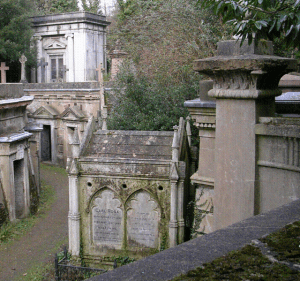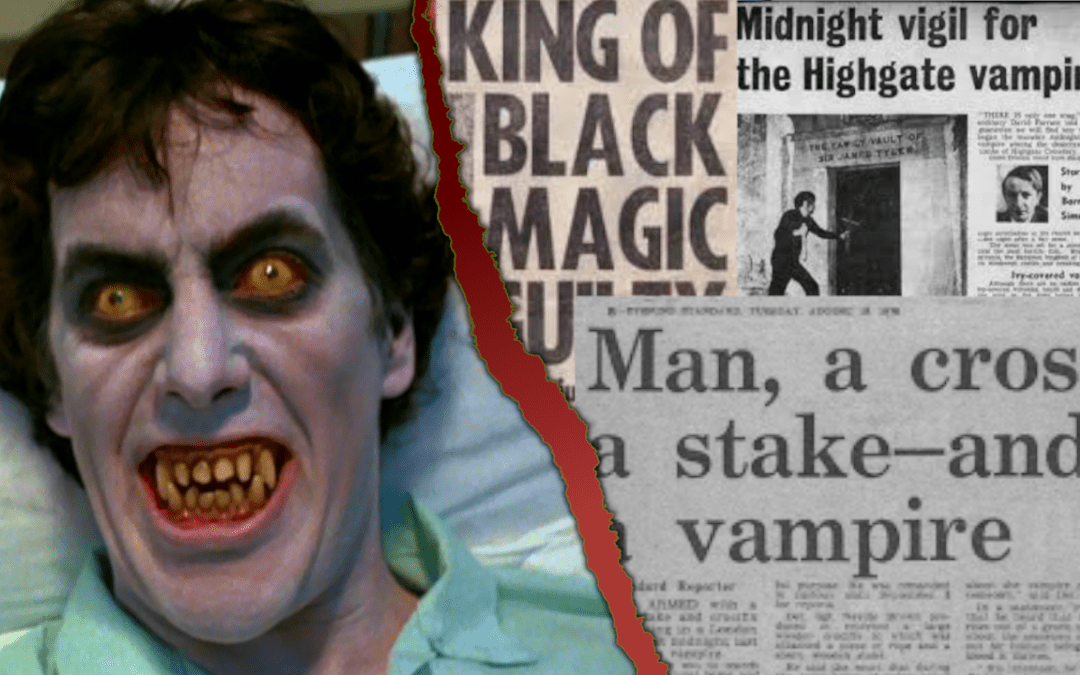There are many episodes from history of superstition flaring up. In Imperial China, mass panics were triggered by rumors of magic and sorcery. Despite no real evidence for any of it, countless people lived in fear of being sacrificed in the name of magic, and countless suspects were tortured into confessing. This was not unique to China, though, and at the same time, suspected witches and werewolves were being burned at the stake in Europe. The thing is, we tend to think of this kind of superstitious paranoia as a distant cultural memory – but as recently as the 1970s, there was a case of mass frenzy. In fact, the case of the Highgate vampire would arguably outdo them all.
Welcome to Highgate Cemetery
Cemeteries have always been feared and avoided, and it doesn’t take a genius to understand why. For a long time, in fact, even the people who worked in them were treated with suspicion. But not all cemeteries are created equal, and one of the most notorious is Highgate Cemetery, in London. Built in the early Victorian era, it was one of 7 new burial grounds established to cope with London’s explosive population growth. As such, more than 160 thousand people are buried here. Much of the cemetery is now covered in overgrown trees and bushes. Foxes roam freely, and it’s as if mother nature is reclaiming the land itself. This, combined with the gothic Victorian architecture does not make it any more friendly.
Numerous horror films have used Highgate as a production location, and has long been rumoured to be haunted. Ghost stories have been told about the cemetery since at least the 1960s, one of which claiming zombified corpses rise from graves at night. But nobody paid much attention to this – not until 1970, when a local newspaper published an account of a strange experience in Highgate. The account belonged to David Farrant, a paranormal investigator drawn to Highgate Cemetery by the previously mentioned ghost stories.

Strange Reports
His own story began in December of 1969. By chance, he happened to be passing by Highgate Cemetery, when he noticed a tall shadowy figure lurking within it. On asking around, he found that many locals had also witnessed the figure, and it was widely feared. At the same time, rumour spread that an unusual number of dead foxes were being found within the cemetery, foxes that seemed to have been drained of their blood. When published, Farrant’s letter drew many more lunatics and investigators – the most prominent of which being Sean Manchester, a self described vampire hunter.
The Highgate Vampire
While Farrant was ambiguous about what the shadowy figure was, Manchester seemed certain it was a vampire – and not just any vampire, the king of vampires. Now, if it really was a vampire killing the foxes, you might wonder why it did not just kill humans – and there’s a good reason for that. If I was a vampire, I would rather try to drink sand than the blood of a Londoner. The way I see it, they’re barely human. But anyway…
The two men battled to control the narrative, providing enough material for national news sources to get involved. With his provocative claims, Manchester had the upper hand. He was like a badly written character from a horror film, waving around a wooden stake and promising to kill the Highgate vampire personally. This promise was made on live television, on the 12th of March 1970 – claiming to know the exact crypt where it lived. He also claimed a cult of human followers lived in a house nearby, that they had served and protected their king for centuries. Fittingly, he chose the very next day to do the slaying, Friday the 13th. And he wasn’t alone. An angry mob gathered in the Highgate area, apparently ready to kill a supernatural creature.
The Hunt
Police were unable to control the mob, and they soon swarmed the cemetery. It was a genuine case of mass frenzy. The people there seemed to really believe a vampire was at large. Many of them brought weapons, and dozens of tombs were broken into and searched. Meanwhile, Manchester and his weird companions had snuck into one specific tomb, where they discretely performed an exorcism. He wanted to drive a wooden stake into the corpse housed there – but one of his less insane companions reminded him of how serious a crime that would be. No real proof of the vampire was found that night, and while some believed the exorcism worked, many more continued to fear the monster.

Later that month, Farrant was arrested in Highgate Cemetary. He was caught red handing, with a crucifix and wooden stake, and eventually he was sent to jail for vandalism and the desecration of a burial site. Farrant consistently denied the charge, but when they catch you prowling a graveyard with a wooden stake… there’s only so much you can deny. Manchester also returned to Highgate – as have countless more paranormal investigators ever since.
Fate of The Highgate Vampire
Interest in the story peaked with the angry mob incident, and the controversy as a whole inspired the 1974 horror movie Dracula A.D. 1972 – which told the story of count Dracula returning to life in modern times. Even this failed to keep the story alive, though. Interest in it harshly declined – and today the Highgate vampire is remembered mostly just by people who live in surrounding areas. Even to them, it is usually laughed off as a case of mass delusion. Yet every now and then, something strange happens in Highgate Cemetery.

